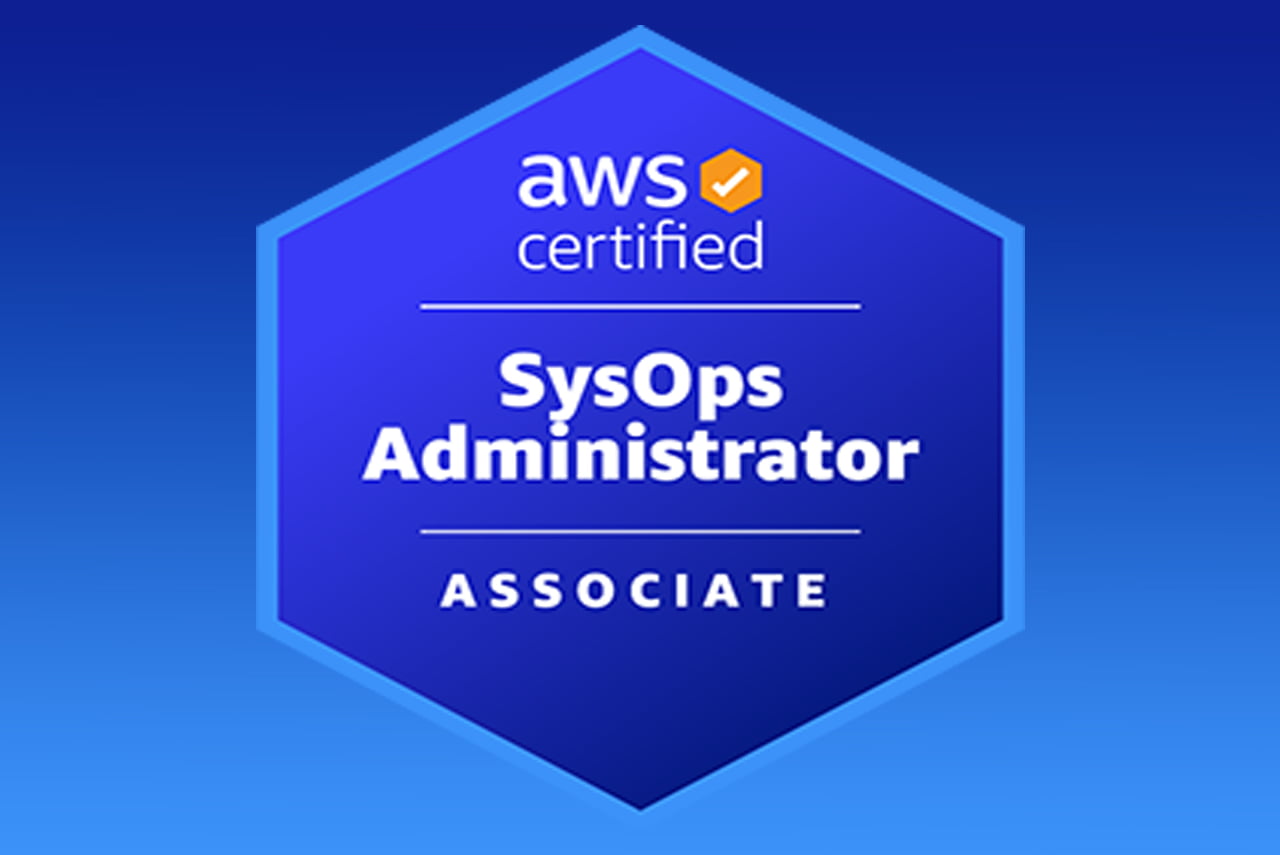
AWS Certified SysOps Administrator – Associate (SOA-C02)
futech_admin
Course Overview
The AWS Certified SysOps Administrator – Associate (SOA-C02) exam is intended for system administrators in a cloud operations role. The exam validates a candidate’s ability to deploy, manage, and operate workloads on AWS. The exam also validates a candidate’s ability to complete the following tasks:
Support and maintain AWS workloads according to the AWS Well-Architected
Framework.
Perform operations by using the AWS Management Console and the AWS CLI.
Implement security controls to meet compliance requirements.
Monitor, log, and troubleshoot systems.
Apply networking concepts (for example, DNS, TCP/IP, firewalls).
Implement architectural requirements (for example, high availability,
performance, capacity).
Perform business continuity and disaster recovery procedures.
Identify, classify, and remediate incidents.
What You'll Learn?
- Your experience deploying, managing, and operating workloads on AWS as well as implementing security controls and compliance requirements
- Familiarity with using both the AWS Management Console and the AWS Command Line Interface (CLI)
- Understanding of the AWS Well-Architected Framework as well as AWS networking and security services
- AWS Certified SysOps Administrator - Associate is a great starting point on the AWS Certification path for individuals who may have any of the following:
- Experience working in a systems administrator role
- Experience in AWS technology
- Strong on-premises IT experience and understanding of mapping on-premises to cloud
- Experience working in other cloud services
- AWS Academy courses and Lab
Course Content
-
Domain 1: Why Cloud
-
-
2. Importance and benefits of cloud computing
-
3. Different types of Cloud Computing deployment model
-
4. Different types of Cloud Computing service model
-
5. Understand about Virtualization
-
6. Overview and understand virtualization in Cloud model
-
7. Different types of virtualization
-
8. Overview of scaling in cloud computing
-
9. Different types of scaling and its applications
-
10. Cost optimization in cloud computing
-
-
Domain 2: AWS - An Overview
-
1. Describe the features of AWS
-
2. AWS Global Infrastructure
-
3. Understand AWS marketplace in cloud computing
-
4. Describe various services in AWS
-
5. Describe the features of Amazon Compute Services
-
6. Describe the features of Amazon Storage Services
-
7. Describe the features of Amazon Network Services
-
8. Describe the features of Amazon Database services
-
9. Create a free tier account in AWS and onboarding
-
10. Introduction AWS management console
-
11. AWS Resource pricing
-
-
Domain 3: Understand Identity Access Management of AWS
-
1. Important of IAM in AWS
-
2. Understand user & group creations
-
3. Create password policies for users
-
4. AWS User Account and Groups in detail
-
5. Creating custom policies in AWS
-
6. Introduction about Roles and their use
-
7. Creating Roles and associating policies
-
8. Creating programmatic access and management console access for users
-
9. Associating policies to the user and groups
-
- Domain 4: EC2 Instance
- Domain 5: Understand Identity Access Management of AWS
- Domain 6: Auto-scaling
- Domain 7: Load Balancing
- Domain 8: EBS (Elastic Block Storage)
- Domain 9: Object Storage in Cloud
- Domain 10: CloudFront
- Domain 11: Route 53
- Domain 12: AWS Security Management
-
Domain 13: Amazon Virtual Private Cloud (VPC)
-
1. Introduction to Amazon Virtual Private Cloud (VPC).
-
2. VPC Advantages and understanding IP addressing CIDR
-
3. Default and Non-default VPC
-
4. Different Components in VPC
-
5. Describe, create, and manage Amazon Virtual Private Cloud
-
6. Amazon VPC, Private Subnet, and Public Subnet
-
7. AWS Networking, Security Groups, and Network ACLs
-
8. Configuration and management of VPN connectivity
-
9. Subnet and Subnet Mask
-
- Domain 14: Relational Database Service (RDS)
- Domain 15: DynamoDB
-
Domain 16: Monitoring Services
-
1. Knowledge on Cloud watch – A monitoring service
-
2. Create and Configuring Monitoring services
-
3. How to perform Setting thresholds and Configuring actions
-
4. Creating a cloud watch alarm
-
5. Getting statistics for ec2 instances
-
6. Monitoring other AWS services
-
7. Configuring Notifications
-
8. Integrating cloud watch with Autoscaling
-
- Domain 17: Application Services – An Overview
- Domain 18: Application Services – An Overview
- Domain 19: AWS Troubleshooting
- Domain 20: AWS Architecture and Design
- Domain 21: AWS Certified SysOps Administrator Exam Guide & Tips
